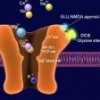
#301
Posted 08 June 2012 - 03:23 AM
Sent from my SCH-I510 using Tapatalk 2
#302
Posted 08 June 2012 - 03:28 AM
Zrbarnes, if you can get the sulbuthiamine cheap try it. If not I am not sure if it would make the biggest difference.
There seems to be a few people around who have claimed it has motivating effects, enough for me to give it a shot. Heck, I've tried just about everything else
#303
Posted 08 June 2012 - 05:06 AM
Hey! Just wondering your dosage for the pram. My dosage was 300 mg and it worked out nicely.
I usually take around 500 (one cap) with no probs.
#304
Posted 08 June 2012 - 06:27 AM
I gather from reading this thread that with regard to CILTEP:
(1) There is little if any known effect of working memory.
(2) There is little if any known effect on intelligence (g).
and...
(3) There may be some positive effect on executive function and attention.
(1) and (2) are notoriously difficult to improve upon, but I'd be happy to see (3).
It sounds like the results of this CILTEP stack on working memory and intelligence are equivocal at best. Those interested in tracking their working memory performance may want to test themselves using Brain Workshop (working memory training software). Using a training exercise you've plateaued on will more readily detect for significant declines in performance. It's a noisy measure, but aggregated across individuals and time (controlling for regimen), it can provide marginally valuable results.
#305
Posted 08 June 2012 - 07:12 AM
Edited by dreth7, 08 June 2012 - 07:13 AM.
#306
Posted 08 June 2012 - 10:01 PM
I've got a pretty important question though. I've been taking quercetin and forskolin, and I saw that quercetin acts as a non-selective MAOI. I've begun taking Zoloft again at 25mg daily, and I'm wondering whether there would be any major interaction? From what I understand, quercetin is a pretty weak MAOI and I know 25mg of Zoloft is a very low dose. So these things considered, anyone see any bad interaction I should try and avoid?
#307
Posted 08 June 2012 - 10:07 PM
#308
Posted 09 June 2012 - 04:25 PM
#309
Posted 09 June 2012 - 06:10 PM
First of all I would like to say thank you for starting such a great thread. Such a wonderful thing to bring in novel approaches that really may help people. I have ordered artichoke extract and forskolin - waiting for these.
In the meantime today I tried methylene blue for the first time. Only been an hour so far but so far really nice effects.
I'm wondering how CILTEP compares to you to MB as I see you used to use it. Is there a reason you stopped the MB?
#310
Posted 09 June 2012 - 09:57 PM
#311
Posted 09 June 2012 - 09:59 PM
Edited by middpanther88, 09 June 2012 - 10:00 PM.
#312
Posted 10 June 2012 - 03:48 AM
I know it's not directed toward me, but I don't really like MB as much. I would get headaches (perhaps from too much focus?). I feel that the CILTEP stack does the opposite--it opens your mind instead of closing it for focus. I tried both concurrently, but I think the MB overpowered the CILTEP effects, and I had a remotely negative experience (headache).
Thanks Panther,
How long have you been on CILTEP? Are you using it daily or cycling? Any tolerance? Also, how is it for anxiety/ mood?
I have to say, I am quite impressed with the MB experience today. Given the recommended dosage of 60ug I was betting most people were probably getting a placebo response.
It wasn't euphoric or supercharged confidence like I've felt at times with racetams or sulbutiamine but it was a marked reduction in the anxiety and depressed mood with some definite though not overwhelming increase in mood and some increased confidence.
I re-dosed about 3 times taking a total of about 180ug but again, overall, quite impressed.
#313
Posted 10 June 2012 - 05:09 AM
I wish I could say I had a positive effect with MB, but I guess I just don't. I was taking it at 60 ug.
#314
Posted 10 June 2012 - 05:34 AM
I've been on the CILTEP stack off and on (only done it 3 times--mostly bc I want to be studying while I do it, and I just haven't gotten the chance lately). I don't think I've reached a tolerance with it. In fact, my second time was definitely more potent than my first (altho I had the same dosage). I feel that my anxiety goes down while my mood goes up. These seem to alter more than just plain l-tyrosine, so I think it's in part due to the stack.
Panther, What is your typical dosage in your CILTEP stack?
#315
Posted 10 June 2012 - 06:16 PM
Some questions before I order some bottles to mess around:
1) Right now I take NOW Silymarin with Artichoke extract (http://www.iherb.com...-Vcaps/802?at=0) because of its hepaprotective properties. Would I add artichoke extract or quercetin to this or replace it?
2) Which Forskolin extract available at iHerb should I buy? The big names (NOW, Jarrow) are seem to be missing and Thorne is not listing the potency of its extract - which of the remaining vendors is trustworthy? For that matter, which quercetin is recommended?
3) I get about 500mg of Tyrosine and 600mg of L Phenylalaninefrom my morning Jarrow Whey shake but never noticed anything from it (or from straight up supplementing 1g in pill form) - any point in adding L Phenylalanine on top of the whey?
4) Do we have any data on how the stack affects Testosterone levels?
FWIW, I have plenty of stuff to combine the CILTEP stack with: EGCG, Citicoline, Alpha-GPC, ALCAR/ALA, Tyrosine, Idebenone, L-Dopa, UMP, Bacopa, Ashwaghanda, Theanine Serene, Mg-Citrate, Maca, SHR-5, even some left-over Bupropion (considering the potential SNRI benefits, this might be an interesting combination but I was not too happy with the side effects of that one when I stopped taking it) or in other words, just about anything aside prescription stimulants, Racetams or Mg-Threonate...
Edited by nupi, 10 June 2012 - 06:17 PM.
#316
Posted 10 June 2012 - 08:37 PM
#317
Posted 11 June 2012 - 10:02 AM
Also are there any herbal ones acting on either of PDE9 or 10?
#318
Posted 11 June 2012 - 02:18 PM
#319
Posted 11 June 2012 - 04:27 PM
Also are there any herbal ones acting on either of PDE9 or 10?
PDE9A inhibition looks mighty tasty. The herbal inhibitors are few and far between..
The only likely one is Morus Alba, A.K.A Mulberry..
http://www.ncbi.nlm....pubmed/22483586
The ic 50 value of 100uM for PDE9A2 is really slight, so it's unlikely to have much of an effect.
PDE9A is in all kinds of weird places though like the Urinary tract (http://www.ncbi.nlm....pubmed/21736695), so it's probably a bad idea to mega dose Mulberry. Nevertheless, it has been used medicinally for thousands of years and the PDE4D2 and PDE4B2 inhibition are quite strong. Here's some data on the more conventional uses of Mulberry (http://www.life-enha...late.asp?ID=992).
I tried some mulberry for kicks a couple of days ago after I read this study. Didn't do too much. Oh well, another one for the oddball supplement box.
PDE10 inhibitor, Papaverine, is an opium alkaloid.
Hadn't seen this article here yet:
Neuropharmacology. 2008 Oct;55(5):908-18. Epub 2008 Jul 12.
The novel selective PDE9 inhibitor BAY 73-6691 improves learning and memory in rodents.
van der Staay FJ, Rutten K, Bärfacker L, Devry J, Erb C, Heckroth H, Karthaus D, Tersteegen A, van Kampen M, Blokland A, Prickaerts J, Reymann KG, Schröder UH, Hendrix M.
Source
BAYER HealthCare AG, Global Drug Discovery, Department of CNS Research, D-42096 Wuppertal-Elberfeld, Germany. f.j.vanderstaay@uu.nl
Abstract
The present study investigated the putative pro-cognitive effects of the novel selective PDE9 inhibitor BAY 73-6691. The effects on basal synaptic transmission and long-term potentiation (LTP) were investigated in rat hippocampal slices. Pro-cognitive effects were assessed in a series of learning and memory tasks using rodents as subjects. BAY 73-6691 had no effect on basal synaptic transmission in hippocampal slices prepared from young adult (7- to 8-week-old) Wistar rats. A dose of 10 microM, but not 30 microM, BAY 73-6691 enhanced early LTP after weak tetanic stimulation. The dose effective in young adult Wistar rats did not affect LTP in hippocampal slices prepared from young (7- to 8-week-old) Fischer 344 X Brown Norway (FBNF1) rats, probably reflecting strain differences. However, it increased basal synaptic transmission and enhanced early LTP after weak tetanic stimulation in hippocampal slices prepared from very old (31- to 35-month-old) FBNF1 rats. BAY 73-6691 enhanced acquisition, consolidation, and retention of long-term memory (LTM) in a social recognition task and tended to enhance LTM in an object recognition task. Bay 73-6691 attenuated the scoplamine-induced retention deficit in a passive avoidance task, and the MK-801-induced short-term memory deficits in a T-maze alternation task. The mechanism of action, possibly through modulation of the NO/cGMP-PKG/CREB pathway, is discussed. Our findings support the notion that PDE9 inhibition may be a novel target for treating memory deficits that are associated with aging and neurodegenerative disorders such as Alzheimer's disease. PMID:18674549[PubMed - indexed for MEDLINE]
#320
Posted 11 June 2012 - 09:32 PM
On these days, my cognition is already impaired because of the swelling in my head, but I've noticed that Stinging Nettle seems to help clear my head a bit when mixed with CILTEP, even on days when I'm not having an allergic reaction. Can anyone else find a reason this might be so, and see if the same is true for themselves?
The only thing I can find is anti-inflamatory actions, and this article about improving brain damage through it's anti-oxidant effects:
J Nutr Biochem. 2009 Dec;20(12):974-81. Epub 2008 Dec 13.
The beneficial effects of nettle supplementation and exercise on brain lesion and memory in rat.
Toldy A, Atalay M, Stadler K, Sasvári M, Jakus J, Jung KJ, Chung HY, Nyakas C, Radák Z.
Source
Research Institute for Sport Sciences, Semmelweis University, 1123 Budapest, Hungary.
Abstract
Regular swimming and phytotherapeutic supplementation are assumed to alleviate the severity of neurodegeneration leading to dementia. The effect of swimming training and that of enriched lab chow containing 1% (w/w) dried nettle (Urtica dioica) leaf on the prevention of severity of brain injury caused by N-methyl-d-aspartate (NMDA) lesion in Wistar rats were investigated. Nettle supplementation and regular swimming exercise seem to improve the adverse effect of brain injury caused by NMDA lesion assessed by passive avoidance test and open-field test. Nettle supplementation decreases the level of reactive oxygen species, measured by electron paramagnetic resonance, and the DNA-binding activity of NF-kappaB. The data reveal that nettle supplementation has an effective antioxidant role, down-regulates the inflammatory transcription factors and could also promote learning performance in the brain. Regular swimming increases the concentration of reactive species in the cerebellum and alters the activity of transcription factors toward inflammation. The additive effect of the two treatments was more profound in the down-regulation of inflammatory transcription processes in NMDA lesion. PMID:19071007
It has aromatase inhibition effects, which could cause an increase in testosterone. Given the probability that I have on the lower range of testosterone, I suppose this could be related.
Edited by zrbarnes, 11 June 2012 - 09:33 PM.
#321
Posted 12 June 2012 - 06:04 PM
#322
Posted 12 June 2012 - 06:51 PM
Does yours stay high all the time? How many days in a row have you been taking CILTEP? How much caffeine do you consume?
Edited by zrbarnes, 12 June 2012 - 07:35 PM.
#323
Posted 12 June 2012 - 07:11 PM
#324
Posted 12 June 2012 - 07:12 PM
#325
Posted 12 June 2012 - 07:12 PM
I am like you 24 and althletic no problem with HR when I measure it. I will also look into this.
#326
Posted 12 June 2012 - 10:46 PM
Are there any contraindications for taking CILTEP with bupropion? I am currently taking 174mg Aplenzin and 40mg Vyvanse. It would be awesome if I could replace the Vyvanse with CILTEP. Thanks!
#327
Posted 13 June 2012 - 12:00 AM
I would cut your Vyvanse down to 10mg and try a low starting dose of artichoke and forskolin (maybe half a pill each, depending on which brand you get) on a morning when you don't have much to do (so that if you feel like crap, you don't impede yourself from doing important things).
I know it takes a while to change dosages of bupriopion, so I would just leave it alone for now.
#328
Posted 13 June 2012 - 12:04 AM
As far as that goes, I think bupropion contraindicates Vyvanse...
I would cut your Vyvanse down to 10mg and try a low starting dose of artichoke and forskolin (maybe half a pill each, depending on which brand you get) on a morning when you don't have much to do (so that if you feel like crap, you don't impede yourself from doing important things).
I know it takes a while to change dosages of bupriopion, so I would just leave it alone for now.
Thanks - that was my thinking too. I'll give it a go with 5mg dexedrine.
#329
Posted 13 June 2012 - 12:08 AM
What sorcery is this? Does this mean that piracetam can have potential as a PDE4 inhibitor, or at least have some kind of interaction with forskolin?Piracetam and piracetam-like drugs: from basic science to novel clinical applications to CNS disorders.
Source
NovoMed Consulting, Silver Spring, Maryland 20904, USA.
Abstract
There is an increasing interest in nootropic drugs for the treatment of CNS disorders. Since the last meta-analysis of the clinical efficacy of piracetam, more information has accumulated. The primary objective of this systematic survey is to evaluate the clinical outcomes as well as the scientific literature relating to the pharmacology, pharmacokinetics/pharmacodynamics, mechanism of action, dosing, toxicology and adverse effects of marketed and investigational drugs. The major focus of the literature search was on articles demonstrating evidence-based clinical investigations during the past 10 years for the following therapeutic categories of CNS disorders: (i) cognition/memory; (ii) epilepsy and seizure; (iii) neurodegenerative diseases; (iv) stroke/ischaemia; and (v) stress and anxiety. In this article, piracetam-like compounds are divided into three subgroups based on their chemical structures, known efficacy and intended clinical uses. Subgroup 1 drugs include piracetam, oxiracetam, aniracetam, pramiracetam and phenylpiracetam, which have been used in humans and some of which are available as dietary supplements. Of these, oxiracetam and aniracetam are no longer in clinical use. Pramiracetam reportedly improved cognitive deficits associated with traumatic brain injuries. Although piracetam exhibited no long-term benefits for the treatment of mild cognitive impairments, recent studies demonstrated its neuroprotective effect when used during coronary bypass surgery. It was also effective in the treatment of cognitive disorders of cerebrovascular and traumatic origins; however, its overall effect on lowering depression and anxiety was higher than improving memory. As add-on therapy, it appears to benefit individuals with myoclonus epilepsy and tardive dyskinesia. Phenylpiracetam is more potent than piracetam and is used for a wider range of indications. In combination with a vasodilator drug, piracetam appeared to have an additive beneficial effect on various cognitive disabilities. Subgroup 2 drugs include levetiracetam, seletracetam and brivaracetam, which demonstrate antiepileptic activity, although their cognitive effects are unclear. Subgroup 3 includes piracetam derivatives with unknown clinical efficacies, and of these nefiracetam failed to improve cognition in post-stroke patients and rolipram is currently in clinical trials as an antidepressant. The remaining compounds of this subgroup are at various preclinical stages of research. The modes of action of piracetam and most of its derivatives remain an enigma. Differential effects on subtypes of glutamate receptors, but not the GABAergic actions, have been implicated. Piracetam seems to activate calcium influx into neuronal cells; however, this function is questionable in the light of findings that a persistent calcium inflow may have deleterious impact on neuronal cells. Although subgroup 2 compounds act via binding to another neuronal receptor (synaptic vesicle 2A), some of the subgroup 3 compounds, such as nefiracetam, are similar to those of subgroup 1. Based on calculations of the efficacy rates, our assessments indicate notable improvements in clinical outcomes with some of these agents.
#330
Posted 13 June 2012 - 12:10 AM
Also tagged with one or more of these keywords: ciltep, pde4, forskolin, ltp
30 user(s) are reading this topic
0 members, 30 guests, 0 anonymous users



















































